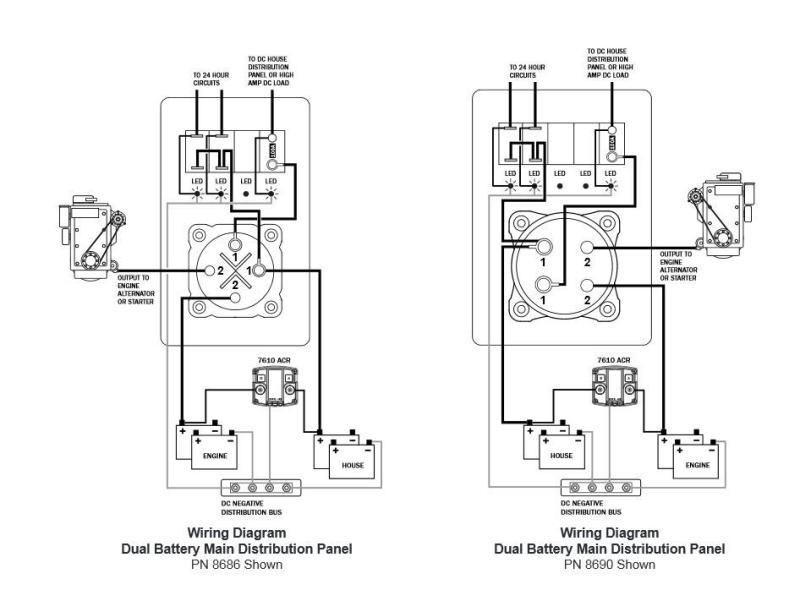I am planning on upgrading the batteries on my Mainship 40 Sedan Bridge and am struggling to decide which way to go and am hoping for some advice from people more knowledgeable than me. Here is what I have currently.
1. A ProMariner 40A, 3 bank charger
2. Three batteries
- Starboard Engine Start/House - Group 27 but plan on replacing with Grp 31
- Port Engine Start/House - Group 27 but plan on replacing with Grp 31
- Generator Start Battery - Unknown Size
3. Current setup up allows me to run house off of either Starboard or Port battery. I attached a rough diagram of my current set up.
Obviously my house capacity is horrible. So far I have come up with 2 options:
Option 1 - Redesign the system so that I have a dedicated house battery bank that is isolated from the starting batteries. I am struggling with how to redesign my set up to accommodate the dedicated house bank.
Option 2- Stay with the current design but increase the size of both the starboard and port engine batteries to something like 2 Group 31s (can't fit 4Ds) in parallel to give myself a much improved house capacity of approximately 200ah. This option would be easy to do but it really limits my ability to increase the size of the house bank. In calculating my aH needs I would really like to be double this in order to reduce generator run time but I could live with this.
I have tried to find an expert here in Port Aransas, TX that I can hire to make recommendations and potentially do the work but I have not been successful in finding someone.
I would appreciate any and all thoughts on the best way to go without breaking the bank. Thanks in advance.
1. A ProMariner 40A, 3 bank charger
2. Three batteries
- Starboard Engine Start/House - Group 27 but plan on replacing with Grp 31
- Port Engine Start/House - Group 27 but plan on replacing with Grp 31
- Generator Start Battery - Unknown Size
3. Current setup up allows me to run house off of either Starboard or Port battery. I attached a rough diagram of my current set up.
Obviously my house capacity is horrible. So far I have come up with 2 options:
Option 1 - Redesign the system so that I have a dedicated house battery bank that is isolated from the starting batteries. I am struggling with how to redesign my set up to accommodate the dedicated house bank.
Option 2- Stay with the current design but increase the size of both the starboard and port engine batteries to something like 2 Group 31s (can't fit 4Ds) in parallel to give myself a much improved house capacity of approximately 200ah. This option would be easy to do but it really limits my ability to increase the size of the house bank. In calculating my aH needs I would really like to be double this in order to reduce generator run time but I could live with this.
I have tried to find an expert here in Port Aransas, TX that I can hire to make recommendations and potentially do the work but I have not been successful in finding someone.
I would appreciate any and all thoughts on the best way to go without breaking the bank. Thanks in advance.


